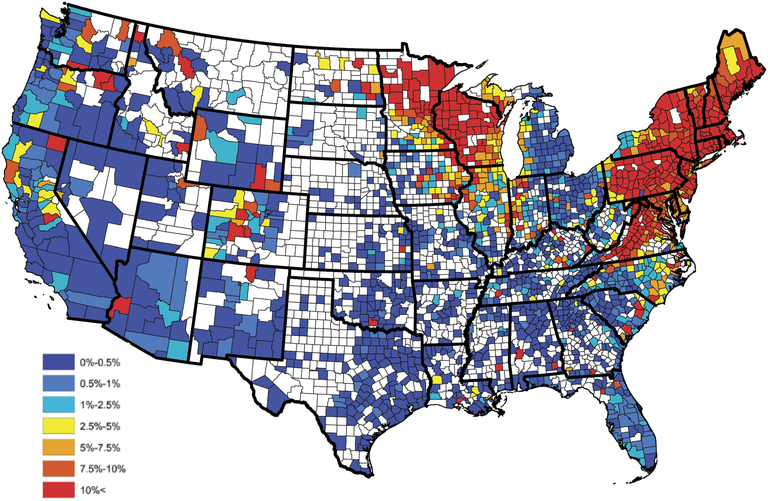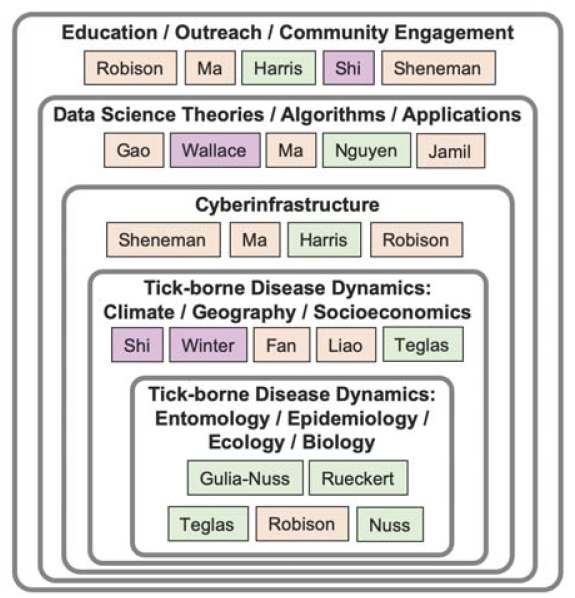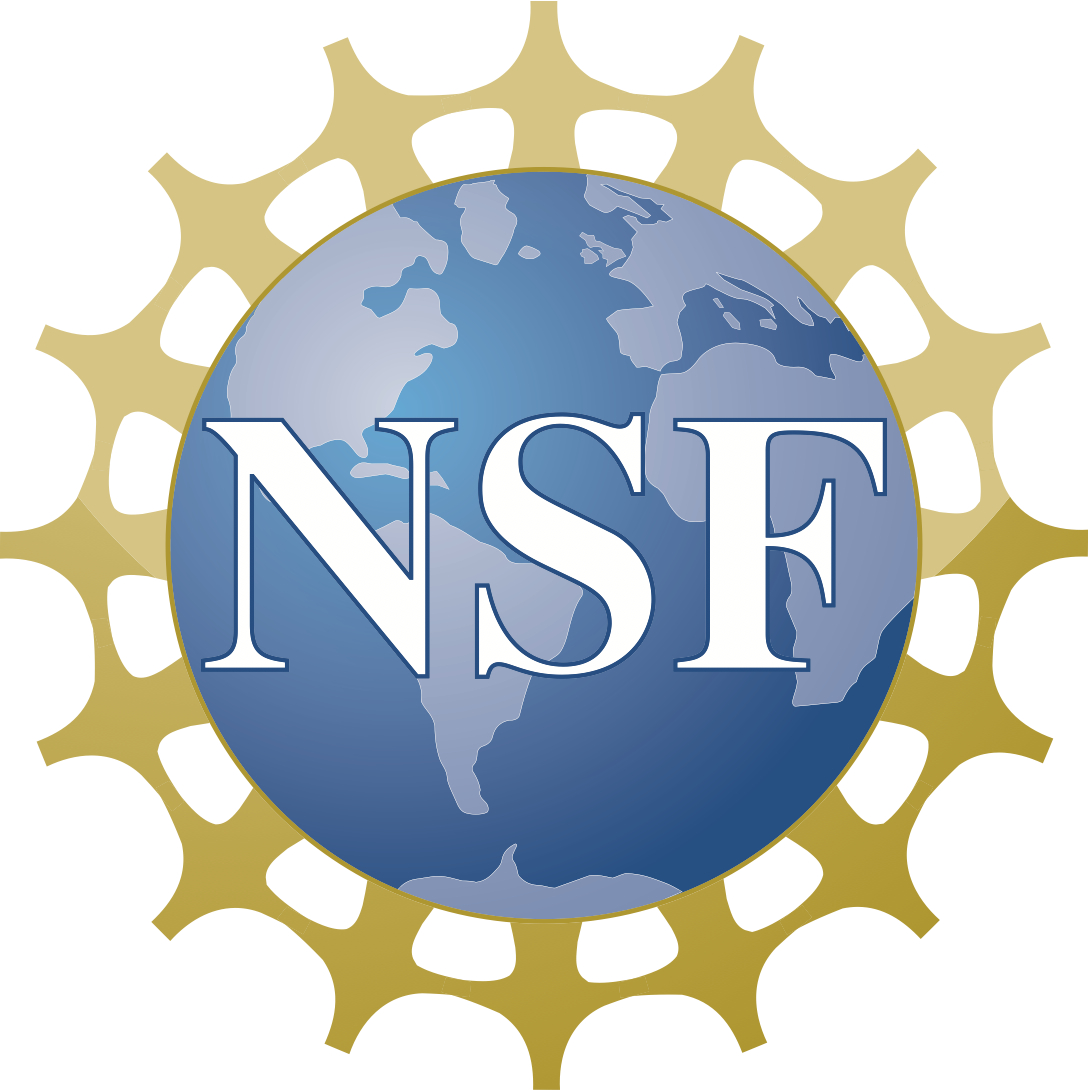The core members of this project are from universities in three EPSCoR jurisdictions:
- University of Idaho,
- University of Nevada, Reno, and
- Dartmouth College (New Hampshire)
The central scientific hypothesis is that, climate change will increase the prevalence of TBDs throughout the western US, both through altering the geographic and seasonal distributions of ticks as well as interacting factors of environment, ecology, socioeconomics, and human behavior.

(Map: Lyme Disease Forecast)
The research includes three focused scientific objectives:
- An advanced framework for TBD research: Data collection and FAIR framework, workflow provenance, and algorithms for a data life cycle;
- Identify the changing patterns in tick importation routes, pathogens, and TBD dynamics in the West; and
- Develop spatio-temporal models of tick dynamics that link TBDs to climate, environment and socio-economic factors.

The team will incorporate expertise in complementary disciplines to generate enriched open data, promote innovation and capacity in big data analytics, and develop training, education and outreach programs for sustained impact. Resources and mentoring to support early-career professionals will build towards sustained productivity. We will bring state-of-the-art knowledge and skills to postdocs, students and other practitioners to nurture a new workforce. This collaborative project will engage academic, state, federal and local partners to create a connected and smart network in the national Big Data innovation ecosystem.
The overarching goal of this research is to build models to identify critical factors for natural and human driven tick migration and tick-borne disease spread in the western US by collecting and mining historical and current data, conducting field investigations, and adapting existing tick abundance models from the eastern US.


